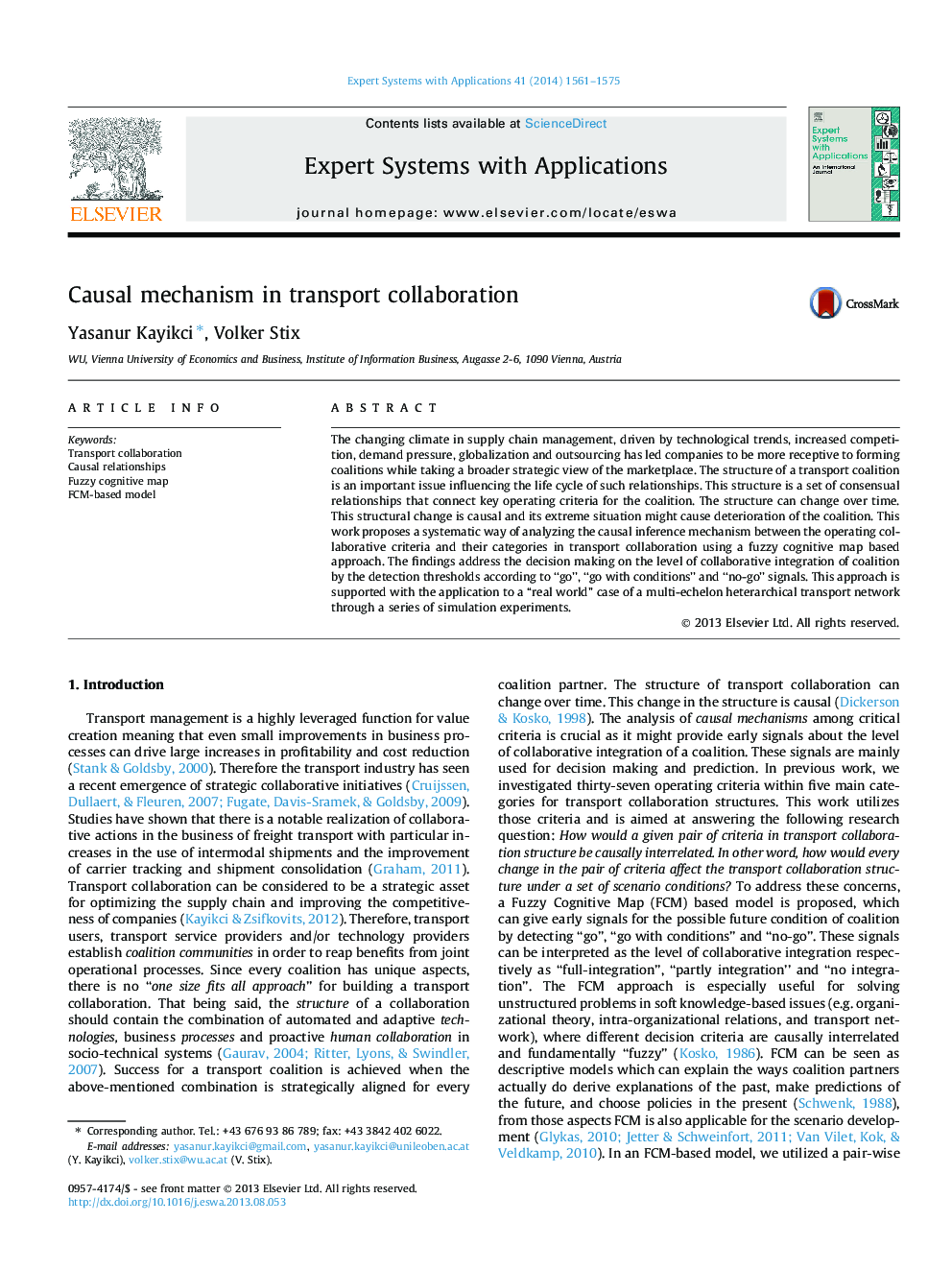| کد مقاله | کد نشریه | سال انتشار | مقاله انگلیسی | نسخه تمام متن |
|---|---|---|---|---|
| 382480 | 660765 | 2014 | 15 صفحه PDF | دانلود رایگان |
• How the change in criteria interacts with each other and how this change affects the structure.
• Model is proposed, which can give early signals for the possible future condition of coalition.
• Analyze the causal inference mechanism for transport collaboration by using a set of scenarios.
• Coalition partners are more willing to share information when the level of trust is high.
• Management involvement is also a key consideration for coalition partners.
The changing climate in supply chain management, driven by technological trends, increased competition, demand pressure, globalization and outsourcing has led companies to be more receptive to forming coalitions while taking a broader strategic view of the marketplace. The structure of a transport coalition is an important issue influencing the life cycle of such relationships. This structure is a set of consensual relationships that connect key operating criteria for the coalition. The structure can change over time. This structural change is causal and its extreme situation might cause deterioration of the coalition. This work proposes a systematic way of analyzing the causal inference mechanism between the operating collaborative criteria and their categories in transport collaboration using a fuzzy cognitive map based approach. The findings address the decision making on the level of collaborative integration of coalition by the detection thresholds according to “go”, “go with conditions” and “no-go” signals. This approach is supported with the application to a “real world” case of a multi-echelon heterarchical transport network through a series of simulation experiments.
Journal: Expert Systems with Applications - Volume 41, Issue 4, Part 2, March 2014, Pages 1561–1575
